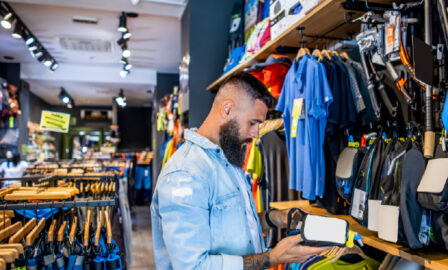2025 Apparel Industry Trends
Clarkston’s team of apparel consultants have highlighted the top apparel industry trends that retailers should consider. See an excerpt of the trends report below, and read all 5 trends for 2025 by downloading the full report here.
2025 Apparel Industry Trends
The apparel industry remains marked by uncertainty moving into 2025. With projected year-over-year fashion industry sales growth between 2-4%, the sector aligns with the global GDP growth forecast of 2.9%. However, consumer spending remains cautious amid economic uncertainty, complex geopolitics, and the increasing impact of climate-related disruptions. To thrive in this challenging landscape, successful apparel brands will need a mastery of the evolving regulatory landscape, as well as an investment in resilient supply chains, new digital innovation, strong brand marketing, and strategic partnerships. We outline 5 key apparel industry trends expected to impact the market in 2025 and beyond.
Trend #1: Regulatory Scrutiny Regarding Fast Fashion
The rise of fast fashion giants, like Temu and Shein, coupled with the increasing frequency of climate change related events has put the sustainability practices of fashion brands under greater scrutiny from regulators and consumers alike.
In the last 12 months, 51% of US consumers have shopped for clothing at either Temu or Shein. Temu and Shein are also growing in popularity across the EU and UK, with Generation X and Baby Boomers being disproportionately high consumers. These fast fashion companies are emblematic of some of the fashion industry’s worst sustainability issues: subpar manufacturing practices, the widespread use of non-recyclable plastic-based materials, and excessive waste from discarded clothing.
In response to the growing dominance of these fast fashion players, regulators in the US and EU are rolling out legislation aimed at reshaping supply chains and ESG standards within the apparel industry. Currently, 15 pieces of legislation related to fashion and textiles are being discussed in the EU. These regulations will cover a wide range of issues, from textile production to the use of harmful chemicals to material recycling. The first of these legislatures have already been passed, including the EU Corporate Sustainability Due Diligence Directive in July of 2024, which mandates due diligence on operational and supply chain activities to ensure environmental responsibility. While many brands in the past few years have sought to introduce more sustainable measures to their practices, these laws would ensure compliance across the industry. For companies who have been slower to adopt strong sustainable measures, this transition could prove costly.
Lawmakers in the US are currently debating two different amendments to “de minimis” trade laws. As it currently stands, imported goods to the US valued at below $800 can enter the country without tariffs and minimal paperwork. Fast fashion brands like Temu and Shein have capitalized on these laws by shipping directly to consumers individually, ensuring individual shipments are under the cost threshold and therefore avoiding many import taxes and regulatory scrutiny that other US companies face. However, in response to growing criticism that fast fashion giants are exploiting loopholes within the de minimis rule, US policymakers are considering various amendments to the de minimis threshold. Some of the proposed changes include lowering the de minimis threshold so more shipments would be subject to tariffs or including specific countries of origin, like China.
However, many brands beyond fast fashion giants would feel the effects. Ash Jamshidpour, founder and CEO of eCommerce shipping company Shiptop, estimates that roughly 40% of all US imports would be affected. This, in turn, would most likely increase prices for goods across the board. He further outlined how these new regulations will not have the intended consequences, as Temu and Shein both have already employed new techniques in an effort to get around these new regulations. In turn, these would have a disproportionate effect for smaller eCommerce businesses and international businesses using similar strategies.
For apparel brands, adapting to these new regulations should be seen as an opportunity for innovation rather than a threat. Companies that invest upfront in their regulatory departments will be able to anticipate upcoming changes over time, avoiding costly, immediate transitions.
Additionally, there exists room for innovation due to these increasing regulations. One area of innovation within the apparel industry is the rise of rental and subscription-based platforms, like Nuuly and Haverdash. These services allow consumers to rent clothing for special occasions and everyday use, offering exposure to new brands while significantly reducing material waste. By embracing new models such as subscription services, apparel brands can align with evolving customer preferences and sustainability standards, turning regulatory challenges into growth opportunities. Continue reading by downloading the full report below.
Download the Full 2025 Apparel Industry Trends Report Here
Read last year’s Apparel Industry Trends Report here.
Subscribe to Clarkston's Insights





